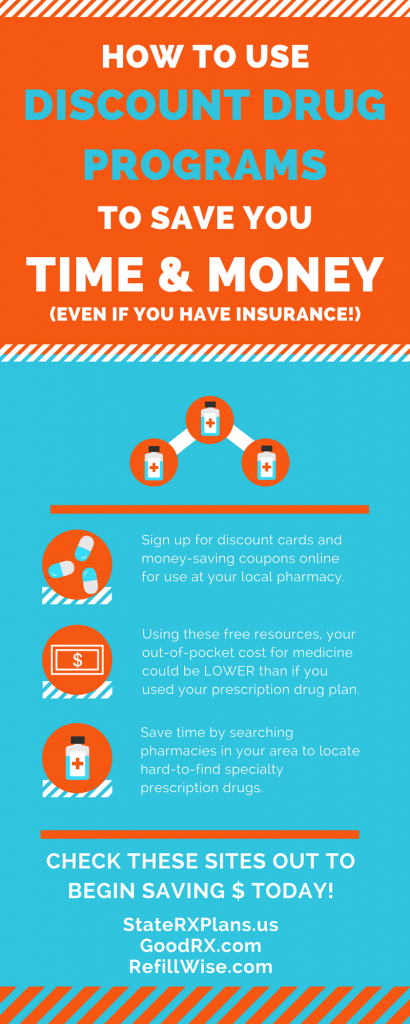
by admin | Aug 28, 2018 | Benefit Management, Group Benefit Plans, Health Plan Benchmarking
 Since the ACA was enacted eight years ago, many employers are re-examining employee benefits in an effort to manage costs, navigate changing regulations, and expand their plan options. Self-funded plans are one way that’s happening.
Since the ACA was enacted eight years ago, many employers are re-examining employee benefits in an effort to manage costs, navigate changing regulations, and expand their plan options. Self-funded plans are one way that’s happening.
In 2017, the UBA Health Plan survey revealed that self-funded plans have increased by 12.8% in the past year overall, and just less than two-thirds of all large employers’ plans are self-funded.
Here are six of the reasons why employers are opting for self-funded plans:
1. Lower operating costs frequently save employers money over time.
2. Employers paying their own claims are more likely to incentivize employee health maintenance, and these practices have clear, immediate benefits for everyone.
3. Increased control over plan dynamics often results in better individual fits, and more needs met effectively overall.
4. More flexibility means designing a plan that can ideally empower employees around their own health issues and priorities.
5. Customization allows employers to incorporate wellness programs in the workplace, which often means increased overall health.
6. Risks that might otherwise make self-funded plans less attractive can be managed through quality stop loss contracts.
If you want to know more about why self-funding can keep employers nimble, how risk can be minimized, and how to incorporate wellness programs, contact us for a copy of the full white paper, “Self-Funded Plans: A Solid Option for Small Businesses.”
by Bill Olson
Originally posted on ubabenefits.com

by admin | Aug 14, 2018 | Benefit Management, Human Resources, Workplace
 “Design thinking” is a fairly common term. Even if the phrase is new to you, it’s reasonably easy to intuit how it works: design thinking is a process for creative problem solving, utilizing creative tools like empathy and experimentation, often with a strong visual component. The term dates from 1968 and was first used in The Sciences of The Artificial, a text written by Nobel Laureate Herbert Simon.
“Design thinking” is a fairly common term. Even if the phrase is new to you, it’s reasonably easy to intuit how it works: design thinking is a process for creative problem solving, utilizing creative tools like empathy and experimentation, often with a strong visual component. The term dates from 1968 and was first used in The Sciences of The Artificial, a text written by Nobel Laureate Herbert Simon.
For Simon, design thinking involved seven components, but today it’s usually distilled to five: empathize, define, ideate, prototype, test. In this way, creative tools are employed to serve individuals in a group, with a solution-driven focus. It’s important to note that these components are not necessarily sequential. Rather, they are specific modes, each with specific tools that contribute equally to solving an issue.
Most significantly, as Steve Boese of HR Executive noted in a recent column, design thinking is a rising trend in HR leadership. “Those using this strategy,” he says, “challenge existing assumptions and approaches to solving a problem, and ask questions to identify alternative solutions that might not be readily apparent.”Design thinking helps teams make decisions that include employees in meaningful ways, personalize target metrics, work outside the box, and produce concrete solutions. Even teams with established, productive structures use design thinking in the review process, or to test out expanded options.
Boese says that the key shift design thinking offers any team is the opportunity to troubleshoot solutions before they’re put into real-time practice. The main goal of design thinking is not process completion, low error rates, or output reports, as with other forms of HR technology, but employee satisfaction and engagement. More often than not, this leads to increased morale and even more opportunities for success.
by Bill Olson
Originally posted on ubabenefits.com

by admin | Jul 13, 2018 | Benefit Management, Human Resources

Life insurance blah blah blah. Is that what you hear when someone mentions it as part of your new job’s employee benefits round-up or when you see something about it on TV or social media? Not to worry: we’ve got the low-down on what you need to know. And it’s really not as overwhelming (or underwhelming) as you might think.
1. It’s part of a sound financial plan. You know about savings, you know about retirement. You might know a bit about investments and long-term financial planning for your health and happiness. And
life insurance helps with planning for your loved ones’ long-term health and happiness, especially those who depend on your income, in case something were to happen to you.
2. There are different kinds of life insurance. In addition to employment-based life insurance (which typically only lasts as long as your employment at your job), there’s term and permanent life insurance.
Term life insurance: You typically pay lower premiums for
term life insurance, but your coverage is just for a specified amount of time, say 20 years, for example. At the end of the term, your insurance coverage ends.
Permanent life insurance: With
permanent life insurance (whole, universal, variable) you typically pay higher premiums in the short term, but then these policies generally allow you to accumulate cash value over time. Your coverage is designed to last as long as you continue to pay premiums.
3. Life insurance is surprisingly affordable for most people. Sure, there are forms of life insurance that get pricier the more features you add on to it, and the price goes up if you’re a smoker or dealing with health problems. But most people think life insurance costs about three times as much as it really does, according to the
Insurance Barometer Study by Life Happens and LIMRA. Just as a general guide, a healthy nonsmoking 30-year-old man can get a $250,000 20-year level term policy for about $16 a month.
4. Key life events are often the best time to get on board. Getting married? Having kids? Changing jobs? Bought a house? Significant life events are often the time you become most aware of the need for life insurance—and on that note…
5. You can change your life insurance. Perhaps you have a life insurance policy that your parents got for you when you were a baby. Perhaps you have a term policy from when you bought your house but now you have a bigger family and you’re concerned about getting them all through college. Or perhaps you want to bump up your coverage because your overall cost of living has changed. And on *that* note …
6. You may well need more coverage than you think. Sometimes people think life insurance is to pay off their own debts and funeral expenses. But a key advantage of having life insurance is to ensure that the people who depend on you will be OK with their ongoing and future financial needs if something happens to you. Need help figuring this out how much? Go to this online calculator:
www.lifehappens.org/howmuch.
7. Life insurance pays out quickly. Because life insurance doesn’t get tangled up in estate claims, it generally pays out quickly, sometimes in days or weeks, usually inside of a month.
8. Life insurance proceeds are generally tax-free. Compare this to, say, crowdfunding options like “GoFundMe” that have become so popular yet create tax consequences for the people they’re meant to help (to say nothing of fees and the lack of guaranteed benefit). It’s also helpful when you’re trying to create an inheritance for a beneficiary.
9. Life insurance protects your family, but only if you let it. Keep your premiums paid up and your beneficiaries up to date, and the door with your agent open so that your loved ones know who to call if they need to. Keep your paperwork with your other vital documents.
10. Life insurance can be more than just life insurance. Using “riders,” or an addendum to a life insurance contract, or even a specific kind of policy, life insurance benefits can become “living benefits,” money you can access before you die, or use to pay for long-term care, as two examples.
If you still need help getting a handle on all this, talk to an agent. They can help you understand the ins and outs and the best policy for your budget and needs. Because of course—the most important thing to know about life insurance is that it’s there to help the people you love the most.
By Helen Mosher
Originally Published By Lifehappens.org

by admin | Jul 6, 2018 | Benefit Management
Did you know that you can save time and money on your prescription drugs by simply signing up for a discount card online? With savings as much as 80% off, these discount cards keep your health care costs down even when the prices of prescriptions are sharply rising.


by admin | Jul 3, 2018 | ACA, Benefit Management, Compliance, Group Benefit Plans
 On June 19, 2018, the U.S. Department of Labor released its Final Rule regarding Association Health Plans (AHPs). AHPs are not new, but they have not been widely available in the past and, in some cases, they have not been successful. The Final Rule is designed to make AHPs available to a greater number of small businesses as an alternative to standard ACA-compliant small group insurance policies.
On June 19, 2018, the U.S. Department of Labor released its Final Rule regarding Association Health Plans (AHPs). AHPs are not new, but they have not been widely available in the past and, in some cases, they have not been successful. The Final Rule is designed to make AHPs available to a greater number of small businesses as an alternative to standard ACA-compliant small group insurance policies.
This article answers common questions about AHPs under the current rules (which groups can continue to use) and the new rules.
Is group medical insurance the same for small and large employers?
Yes and no. Federal law imposes certain basic requirements on all group medical plans, regardless of the employer’s size. For instance, plans cannot exclude pre-existing conditions nor impose annual or lifetime dollar limits on basic benefits. If the plan is insured, it also is subject to the insurance laws of the state in which the policy is issued.
Small group policies, which are sold to employers with up to 50 or 100 employees, depending on the state, are subject to additional requirements. These policies must cover 10 categories of essential health benefits (EHBs), including hospitalization, maternity care, mental health and substance abuse treatment, and prescription drugs. (Some states allow certain grandfathered or grandmothered policy exceptions.) For most small employers, their options for group medical insurance are limited to small group policies that comply with the full scope of ACA requirements. On the other hand, the policies are subject to guaranteed issue and adjusted community rating rules, so carriers cannot refuse to insure a small employer nor use any past claims experience in setting rates.
Large group policies, which can only be sold to groups with at least 50 or 100 employees, depending on the state, are not required to cover all EHBs. Carriers have more flexibility in designing coverage options and developing premium rates in the large group market. This means larger employers have more options to choose from and may be able to purchase coverage at a lower cost than would apply to a small group policy. Note, however, that there is no guaranteed issue protection, so carriers can accept or reject each employer’s application or use the employer’s past claims experience in setting rates.
Lastly, self-funded plans are subject to the ACA and other federal laws, but generally are exempt from state laws. They typically are not feasible for small employers, however, due to the financial risk of uninsured programs.
What is an Association Health Plan (AHP)?
Group insurance covers the employees of an employer (or an employee organization such as a labor union). An AHP, as the name implies, covers the members of an association. Unrelated employers can obtain coverage for their employees through an AHP provided the employers form a bona fide association. Traditionally, this has meant that the employers had to have a “commonality of interest” and their primary interest had to be something other than an interest in providing benefits. For this reason, AHPs generally have been limited to associations formed by employers in the same trade, industry, or profession.
The Final Rule makes AHPs available to a wider range of businesses by expanding the meaning of “commonality of interest.” Once the Final Rule takes effect, an association may be formed by employers that are:
- In the same trade, industry, or profession, regardless of location; or
- In the same principal place of business; i.e., in the same state or in the same multi-state metropolitan area.
Under the new rules, the employer’s primary interest in associating may be benefits coverage, although they still will need to have at least one other substantial business purpose other than benefits. This is a key difference from the current rules.
When does the new Final Rule take effect?
The Final Rule expanding the definition of an association for purposes of an AHP will take effect on staggered dates:
- For fully insured AHPs: September 1, 2018
- For self-funded AHPs:
- If in existence on or before June 19, 2018: January 1, 2019
- If created after June 19, 2018: April 1, 2019
As noted, the new rules do not replace existing rules. Employers and associations may continue to follow the existing rules (which generally limit AHPs to employers in the same trade, industry, or profession). The new rules merely expand the opportunities for AHPs, such as making them available to employers in the same state or metropolitan area even if they are in different industries.
Are AHPs limited to employers with employees? What about sole proprietors?
Currently, sole proprietors, such as mom-and-pop shops without any W-2 employees, purchase medical insurance in the individual market. Individual policies often cost more than group policies or AHPs. The new rules will expand the availability of AHPs to include sole proprietors who work a minimum number of hours (so-called working owners).
What about state laws? Will AHPs be available nationwide?
Insurance products, including AHPs, are regulated by state law. Under both the existing and new rules, AHPs are multiple employer welfare arrangements (MEWAs). State laws on MEWAs are quite complicated. In some states, MEWAs are prohibited. In others, insured MEWAs are allowed but self-funded plans are prohibited. The laws vary from state to state, so different carriers will make different decisions about whether they want to design and market AHPs in various jurisdictions around the country.
A number of states are very concerned about AHPs and may prohibit them in their states or impose strict requirements to ensure they will provide reliable and effective coverage. Other states will view AHPs as cost-effective alternatives to ACA-compliant policies for small employers and look to encourage their expansion.
What’s next?
There is no clear answer to what’s next. Over the coming months, carriers across the country likely will review the reasons they have or have not offered AHPs in the past, and whether they want to consider new approaches in the future. Along with economic and market issues to consider, carriers also must consider the state insurance laws in different jurisdictions. At the same time, many state legislatures and insurance commissioners will be reviewing their existing rules and whether they want to promote or expand the availability of AHPs in their area.
Oh … and the lawsuits. Yes, that also is what’s next. As of this writing, attorneys general in different states are planning to join together in challenging the federal government’s Final Rule on AHPs. Their stated concern is that effective regulation is required to ensure that plans provide adequate coverage.
ThinkHR will continue to monitor developments in this area.
by Kathleen A. Berger
Originally posted on thinkhr.com

by admin | May 16, 2018 | Benefit Management, Group Benefit Plans, Human Resources
 Curious about when you should notify a participant about a change to their health care plan?
Curious about when you should notify a participant about a change to their health care plan?
The answer is that it depends!
Notification must happen within one of three time frames: 60 days prior to the change, no later than 60 days after the change, or within 210 days after the end of the plan year.
For modifications to the summary plan description (SPD) that constitute a material reduction in covered services or benefits, notice is required within 60 days prior to or after the adoption of the material reduction in group health plan services or benefits. (For example, a decrease in employer contribution is a material reduction in covered services or benefits. So is a material modification in any plan terms affecting the content of the most recent summary of benefits and coverage (SBC).) While the rule here is flexible, the definite best practice is to give advance notice. For collective practical purposes, employees should be told prior to the first increased withholding.
However, if the change is part of open enrollment, and communicated during open enrollment, this is considered acceptable notice regardless of whether the SBC, SPD, or both are changing. Essentially, open enrollment is a safe harbor for all 60-day prior/60-day post notice requirements.
Finally, changes that do not affect the SBC and are not a material reduction in benefits must be communicated and summarized within 210 days after the end of the plan year.
By Danielle Capilla
Originally published by www.UBABenefits.com
 Life insurance blah blah blah. Is that what you hear when someone mentions it as part of your new job’s employee benefits round-up or when you see something about it on TV or social media? Not to worry: we’ve got the low-down on what you need to know. And it’s really not as overwhelming (or underwhelming) as you might think.
Life insurance blah blah blah. Is that what you hear when someone mentions it as part of your new job’s employee benefits round-up or when you see something about it on TV or social media? Not to worry: we’ve got the low-down on what you need to know. And it’s really not as overwhelming (or underwhelming) as you might think.




